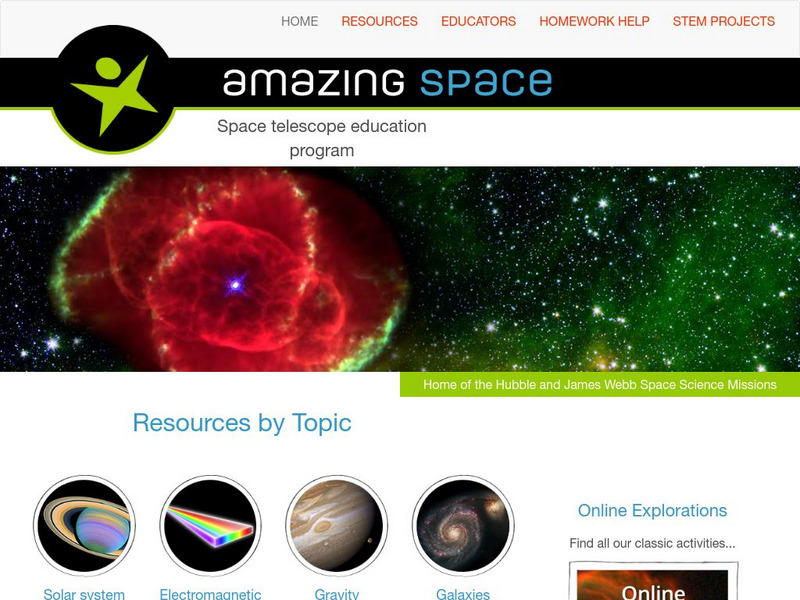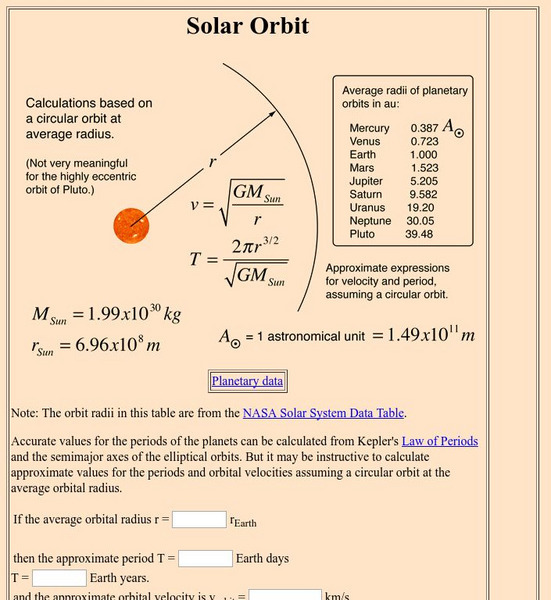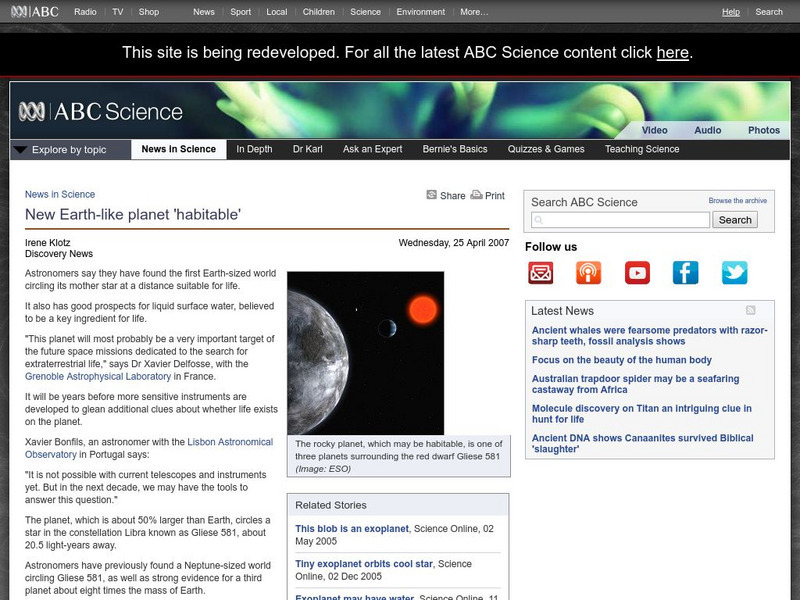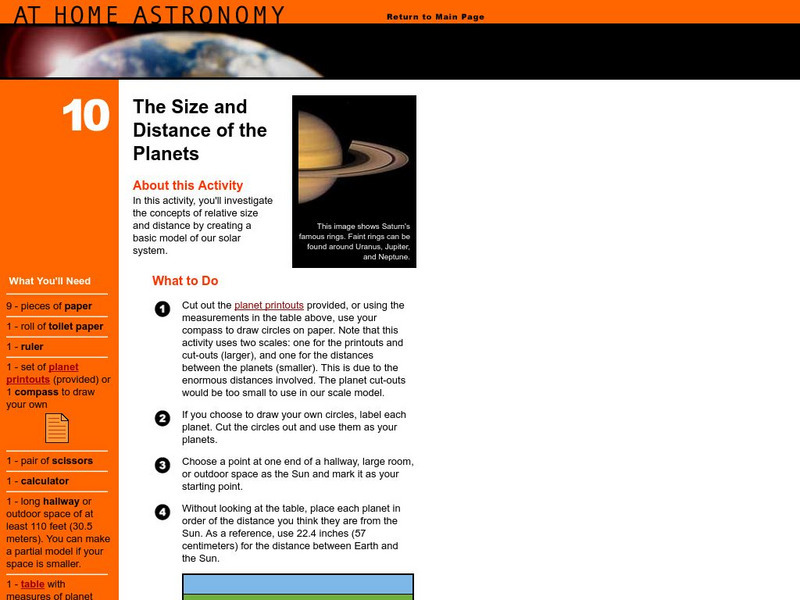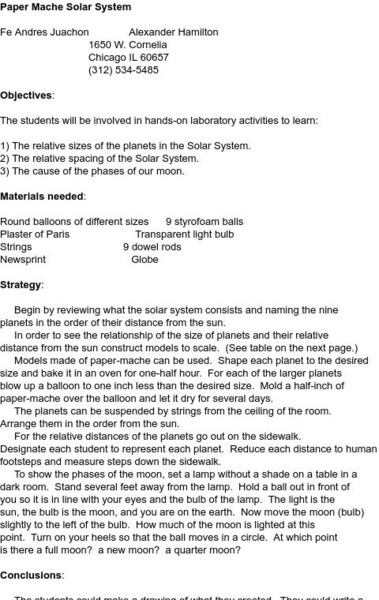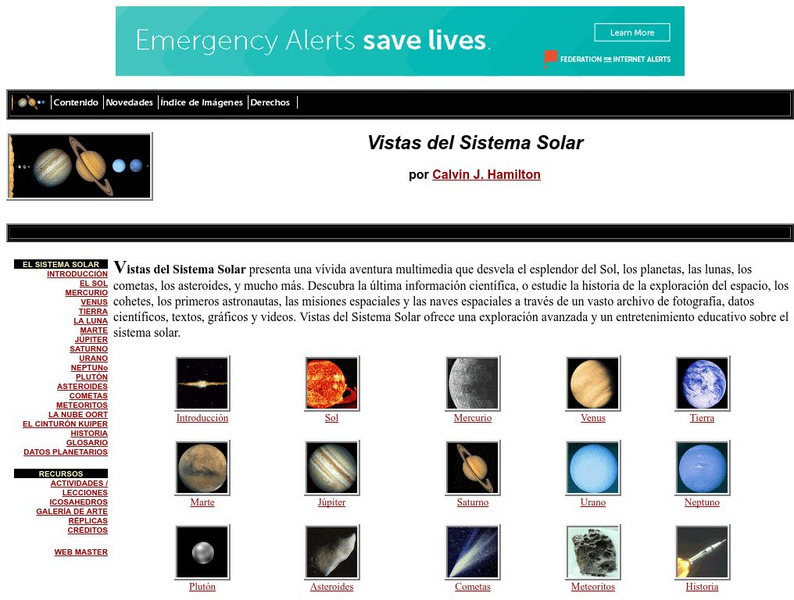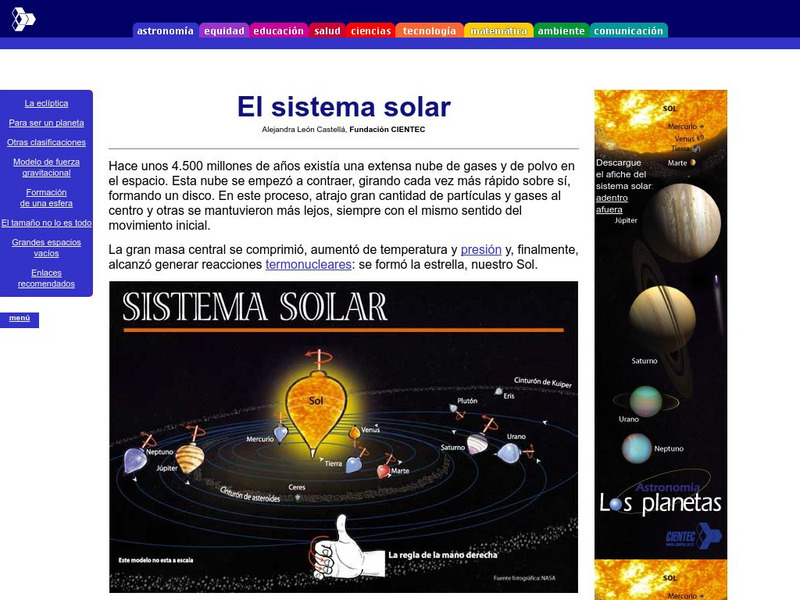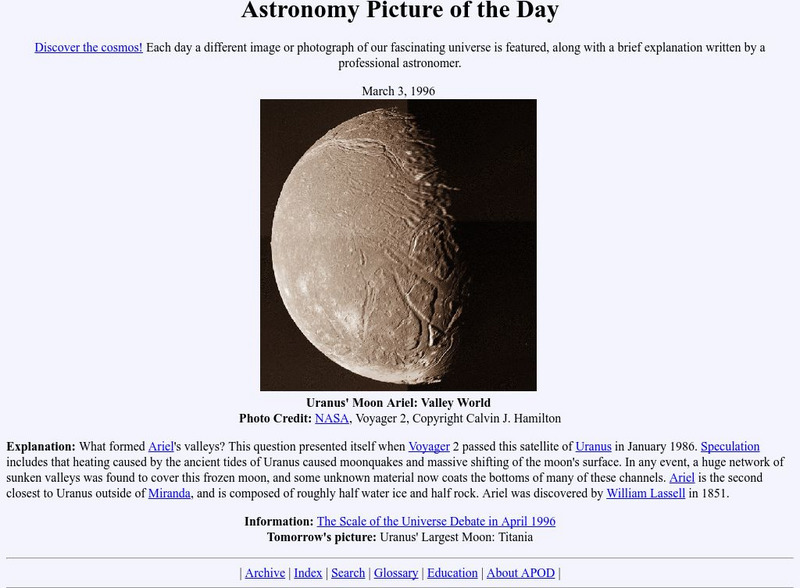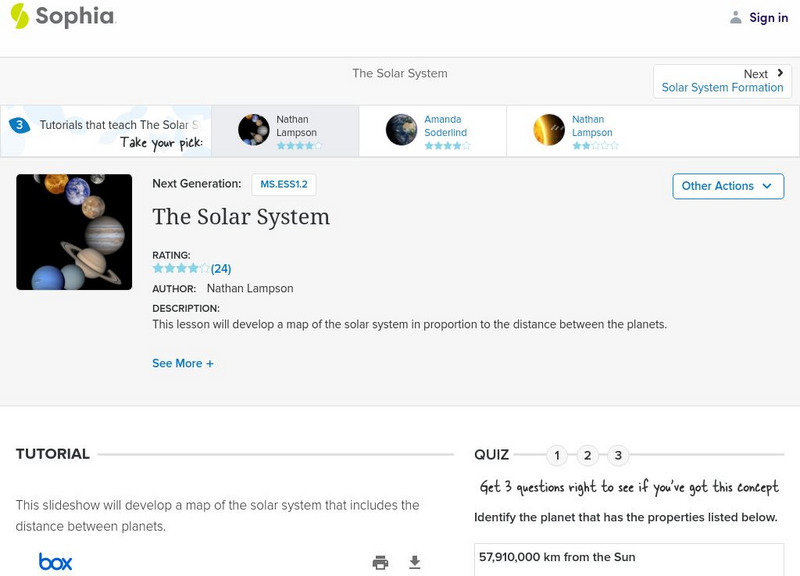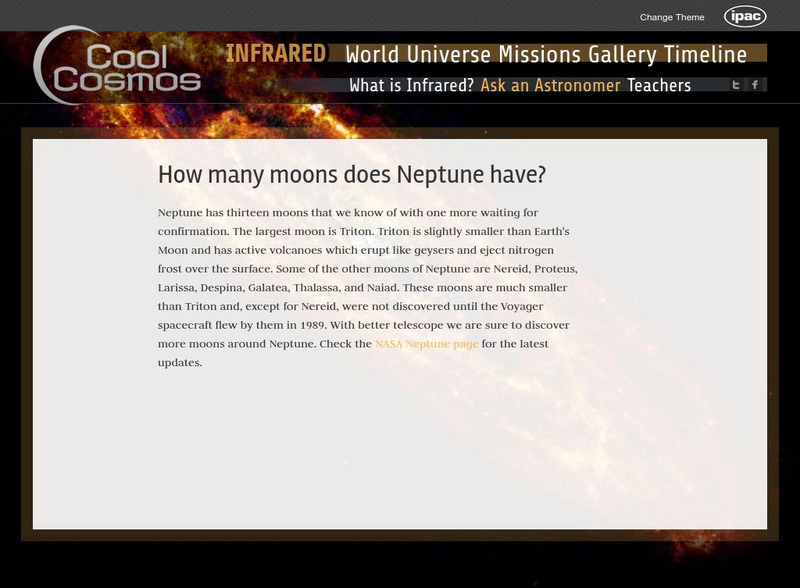Other
Canal Kids: Ciencias (Science for Portuguese Speakers)
Colorful, engagingly written information about astronomy and biology for Portuguese-speaking English language learners. Both subjects are broken down into a broad array of related subtopics. The biology section is particularly helpful...
Space Telescope Science Institute
Space Telescope Science Institute: Amazing Space
Amazing Space promotes the "science and majestic beauty of the universe for use in the classroom." Here you can find learning activities, lesson plans, teaching guides, and helpful tips for students eager to learn about space and space...
Georgia State University
Georgia State University: Hyper Physics: Solar Orbit
A table listing the average radius of orbit for the nine planets about the sun; expressed in astronomical units. Data can be used to calculate the orbital speed or the orbital period.
NASA
Nasa: Kepler's Third Law
This site from NASA states Kepler's third law of motion and extends it to develop an equation for the velocity of an orbiting planet.
NASA
Nasa: Kepler's Second Law
This site from NASA states Kepler's second law of planetary motion and depicts its meaning with an informative diagram. Relates the law to conservation of energy principles and discusses the eccentricity of a satellite's (or a planet's)...
Australian Broadcasting Corporation
Australian Broadcasting Corporation: News in Science: New Earth Like Planet 'Habitable'
From ABC News in Science, Irene Klotz's article discusses the findings of researchers and scientists related to the discovery of an "Earth-like planet" which is capable of supporting life.
Australian Broadcasting Corporation
Australian Broadcasting Corporation: News in Science: Astronomers Find 28 More Exoplanets
From ABC News in Science, Maggie Fox's article explores a new string of "exoplanets" discovered orbiting distant stars. This research leads to numerous possibilities, one of which being the existence of planetary systems containing life...
NASA
Nasa: Finding the Distances Between Planets
NASA site features a lesson plan that teachers can use to help their students see how far they are from each of the planets.
University of California
Uc Berkeley: At Home Astronomy: The Size and Distance of Planets
In this activity, "You will investigate the concepts of relative size and distance by creating a basic model of our solar system." Planet printouts are provided and this site contains related links.
California Institute of Technology
Spitzer Science Center: Is There Anybody Home?
This image, titled "Is There Anybody Home?" features six fuzzy pictures depicting six stars associated with known planets. The text under the image details various specifics about the picture and the planetary system associated with the...
Science and Mathematics Initiative for Learning Enhancement (SMILE)
Smile: Paper Mache Solar System
This site from the Illinois Institute of Technology provides a set of directions for the creation of a solar system model out of paper mache. Includes orbital distances and planet diameters for the nine planets. Great idea for a student...
Science Education Resource Center at Carleton College
Serc: Mn Step: What Sizes Are the Planets and How Do They Move Around the Sun?
An outdoor activity where students simulate how planets orbit around the sun using different sizes of balloons.
Ministerio de Educación (Spain)
Ntic: Astronomia Visible
In this site you can learn about stars, planets, satellites and a little history of Astronomy.
Text Project
Text Project: Fyi for Kids: What's Out There? [Pdf]
This is an article about Voyager I and II including when and why they came about and what information they have provided.
Other
The Ptolemaic Model of the Planetary System
An easy-to-read description and history of Ptolemy's geocentric model of the universe. Geocentric means that Ptolemy believed the Earth was the center of the universe.
Other
Kid Power: Astronomy for Kids
Young children can find facts about the Solar System, the Sun, meteorites, stars, galaxies, planets, our moon, comets, asteroids, and space exploration. Pages offer clear photos and bullet-point information, which is easy to read and...
Views of the Solar System
Solarviews: Vista Del Sistema Solar
This site offers an exploration and educational entertainment about the solar system. You will be able to study the history of the exploration of space, rockets, the first astronauts, space missions through a large archive of photos,...
Fundación Cientec
Cientec: El Sistema Solar
Reinforce your knowledge about the solar system. Find out what does it take to be a planet, large empty spaces and the dwarf planet.
Enchanted Learning
Enchanted Learning: Zoom Astronomy
Where is our Solar System? How far away is the sun? What makes up the sun? Find out all you want to know about our solar system. This is a comprehensive on-line site about space and astronomy. Check out all of the excitement!
NASA
Nasa: Astronomy Picture of the Day: Uranus's Moon Oberon
Brief overview of Oberon, the most distant and second largest moon of Uranus. Includes its discovery and also a few pictures. A NASA picture of the day.
NASA
Nasa: Astronomy Picture of the Day: Uranus's Moon Ariel
Provides a brief overview of Ariel, one of Uranus's moons. Details how its deep valleys were formed. A NASA astronomy picture of the day.
Sophia Learning
Sophia: The Solar System: Lesson 1
This lesson will develop a map of the solar system in proportion to the distance between the planets. It is 1 of 3 in the series titled "The Solar System."
California Institute of Technology
Cal Tech: Cool Cosmos: Ask an Astronomer: How Many Moons Does Neptune Have?
Resource provides a brief answer to this question.
Ducksters
Ducksters: Space Science: Astronomy for Kids
Kids learn about astronomy, the study of outer space including the stars, planets, comets, black holes, and the Solar System. History and astronomers in this astronomy for teachers and kids section.

